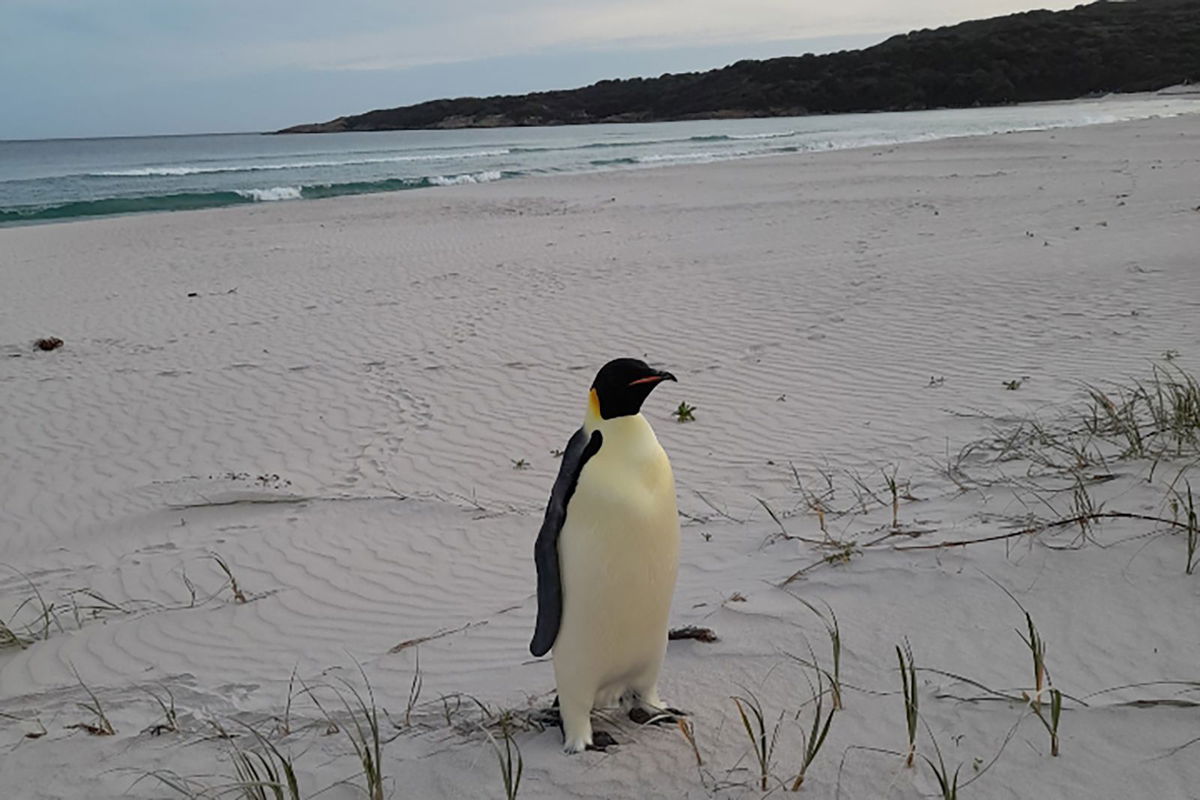Emperor penguin turns up on Australian beach, thousands of miles from home

The emperor penguin
(CNN) — An emperor penguin surprised locals when it appeared on a beach in Australia after making an epic journey of thousands of miles from its home in Antarctica.
The penguin arrived on Ocean Beach in Denmark, Western Australia, on Friday, according to a statement from Australia’s Department of Biodiversity, Conservation and Attractions (DBCA), sent to CNN on Wednesday.
A spokesperson described the penguin as “malnourished,” adding that the animal “remains in the care of a trained and registered local wildlife carer.”
“The rehabilitation process is expected to take a few weeks,” said the spokesperson, who added that the wildlife carer is being supported by a DBCA officer.
Ocean Beach is more than 2,200 miles due north of Antarctica, suggesting the penguin probably swam significantly further to reach Australia.
Belinda Cannell, a research fellow at the University of Western Australia, told Australian public broadcaster ABC News that this is the first time an emperor penguin has been seen so far north.
The penguin may have followed a current north from Antarctica, she said.
“What they tend to do is follow certain currents where they’re going to find lots of different types of food,” Cannell told ABC.
“So maybe those currents have just tended to be a little bit further north towards Australia than they normally would.”
Local surfer Aaron Fowler told ABC that he saw the penguin emerging from the sea.
“It was massive, it was way bigger than a sea bird and we’re like, what is that thing coming out of the water? And it kind of had a tail sticking out like a duck,” Fowler said.
“It stood up in the waves and just waddled straight up to us, an emperor penguin, he was probably about a meter high, and he was not shy at all,” he added.
“He tried to do like a slide on his belly, thinking it was snow, I guess, and just face-planted in the sand and stood up and shook all the sand off,” Fowler said.
Emperor penguins are the tallest and heaviest of the 18 penguin species. They can weigh up to 88 pounds (40 kilograms) and stand 45 inches (1.1 meter) tall.
A female emperor lays one egg per breeding season, then passes it over to her male partner to incubate while she forages for food for about two months.
The animals are only found in the wild in Antarctica, but they are increasingly threatened by the climate crisis.
Emperor penguins rely on sea ice to form their breeding colonies, avoid predators in the ocean and forage for food. But as Earth’s temperature rises as a result of greenhouse gas and carbon dioxide emissions, sea ice is at risk of disappearing.
Four out of five emperor penguin colonies analyzed in the Bellingshausen Sea, west of the Antarctic Peninsula, saw no chicks survive in 2022 as the area experienced an enormous loss of sea ice, according to a study published in August 2023.
This widespread “catastrophic breeding failure” is the first such recorded incident, according to the report, and supports grim predictions that more than 90% of emperor penguin colonies will be “quasi-extinct” by 2100 as the world warms.
The-CNN-Wire
™ & © 2024 Cable News Network, Inc., a Warner Bros. Discovery Company. All rights reserved.
CNN’s Ashley Strickland and Rachel Ramirez contributed to this report.